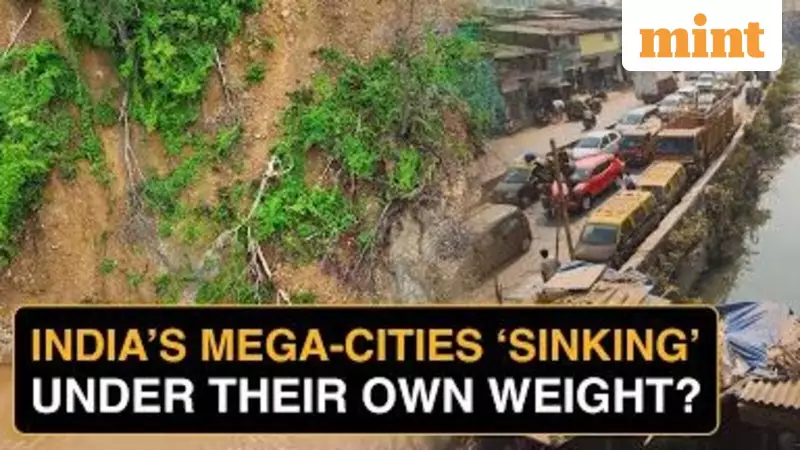
India is facing a silent but relentless urban emergency as some of its most populous cities are literally sinking into the ground. A stark study from October 2025 has revealed the alarming rate at which urban land is subsiding, posing a monumental threat to infrastructure and millions of residents.
The Alarming Data: How Fast Are Cities Sinking?
The research, updated in November 2025, paints a grim picture. It shows that a massive 878 square kilometers of urban land across India is experiencing subsidence. The capital, Delhi, is one of the worst affected, sinking at a rate of 51 millimeters per year. This rapid descent puts more than 2,400 buildings in immediate danger, highlighting a direct threat to the city's structural integrity.
In the southern metropolis of Chennai, the situation is equally critical, especially in its sensitive floodplain areas. The city is sinking at 31.7 millimeters annually, which dramatically increases its vulnerability to seasonal flooding and waterlogging. Meanwhile, Mumbai, a city built significantly on reclaimed land, finds its very foundation under threat, making it highly susceptible to the impacts of this slow-motion disaster.
The Primary Culprit: Groundwater Over-Extraction
The science behind this sinking, or land subsidence, points overwhelmingly to one major cause: the massive over-exploitation of groundwater. As cities expand and populations swell, the demand for water skyrockets. This leads to excessive pumping of water from underground aquifers.
When this water is removed, the porous spaces in the soil and rock layers that were once held up by the water pressure begin to compress and collapse. The ground above, no longer supported, starts to sink gradually. This is not a sudden event but a creeping crisis, making it all the more dangerous as the damage accumulates over time.
Consequences and the Unfolding Urban Crisis
The consequences of this subsidence are severe and far-reaching. We are looking at a future where cracks in buildings, roads, and bridges become commonplace. Vital infrastructure like water pipelines, sewage systems, and metro lines could suffer irreversible damage.
For coastal cities like Mumbai and Chennai, the problem is compounded by rising sea levels. Sinking land and rising seas create a perfect storm for widespread coastal inundation. The October 2025 study serves as a critical wake-up call, urging immediate action on water management and urban planning to avert a full-blown catastrophe.
This is not just an environmental issue; it is a ticking time bomb for India's urban future, demanding a swift and strategic response from policymakers and citizens alike.





